Vlogging has become so popular that camera manufacturers are starting to make cameras specifically designed for the task. That’s what makes the Sony ZV-1 the best vlogging camera currently available, combining 4K video and an excellent built-in microphone with beginner-friendly controls in a compact package. Whether your goal is to create a personal visual journal, stay in touch with family, or reach your rabid YouTube following, the ZV-1 is an easy recommendation for vloggers.
- At a glance:
- Best camera for vlogging: Sony ZV-1
- Best mirrorless camera for vlogging: Sony A6600
- The best full-frame camera for vlogging: Sony A7 III
- The best budget vlogging camera: Panasonic Lumix G7
- [The best DSLR for vlogging: Canon EOS 90D
- The best action camera for vlogging: GoPro Hero8 Black
- What about the camcorders?
- Can I shoot vlogs with my phone?
While you could just vlog with your phone, opting for a dedicated camera comes with numerous advantages, from expandable storage to higher-quality video and better support for external microphones. Out of the box, the ZV-1 has everything you need to get started at a relatively affordable price, but that doesn’t mean other cameras won’t offer more for those who are willing to put in a bit more effort.
At a glance:
- Best overall: Sony ZV-1
- The best mirrorless camera for vlogging: Sony A6600
- The best full-frame camera for vlogging: Sony A7 III
- The best budget vlogging camera: Panasonic Lumix G7
- The best DSLR for vlogging: Canon EOS 90D
- The best action camera for vlogging: GoPro Hero8 Black
Best camera for vlogging: Sony ZV-1
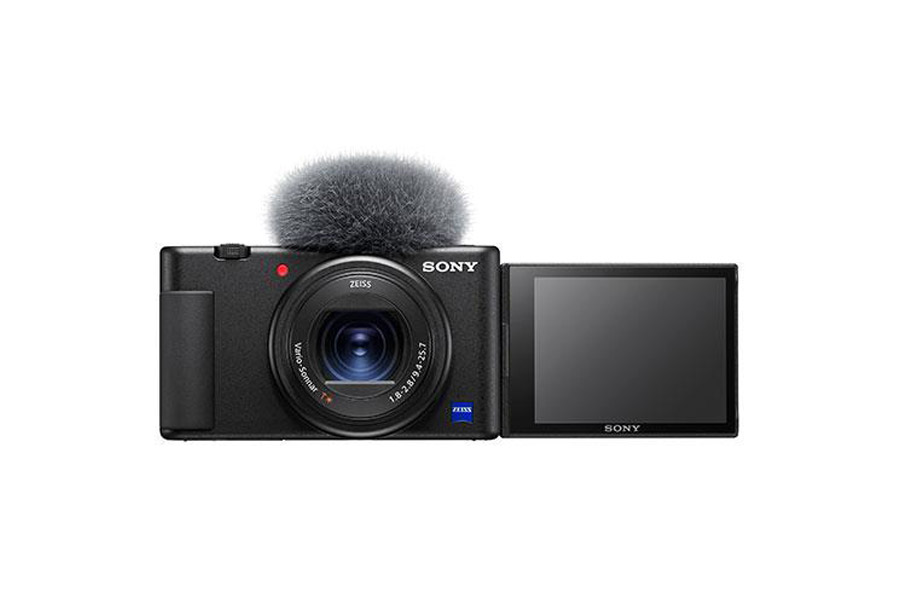
Why should you buy this: Compact, beginner-friendly, good audio and video quality
Who’s it for: All vloggers, but especially beginners and travel junkies
Why we picked the Sony ZV-1:
This offshoot of Sony’s popular RX100 line was built specifically with vloggers and YouTubers in mind. It features an upgraded, three-capsule microphone and includes a wind sock to help with recording higher audio quality outdoors. The RX100’s pop-up flash and viewfinder have vanished to make room for the improved microphone, but it’s a trade-off vloggers will appreciate. The new vari-angle screen is also a welcome change, which now flips out to the side for better visibility.
Internally, the ZV-1 has the same 20-megapixel 1-inch-type sensor as the RX100 VII, which was our pick for the best point-and-shoot camera. However, rather than use the 24-200mm f/2.8-4.5 (full-frame equivalent) lens of the RX100 VII, Sony opted for the shorter 24-70mm f/1.8-2.8 lens of older RX100 cameras. This has a number of advantages for video, starting with the wider aperture that allows for a shallower depth of field for blurring out backgrounds. This lens also incorporates a built-in neutral density filter which helps when shooting in bright light by acting like sunglasses for your camera. This allows for a slower shutter speed, keeping footage smooth and natural.
Sony also built several features into the ZV-1 designed specifically for the modern content creator who may not be an experienced videographer. This includes a Background Defocus mode that automatically selects the widest aperture when enabled, and a Product Highlight mode that tunes the autofocus to quickly transition from the presenter’s face to a product held in front of them, snapping back to the face when the product is lowered from view.
While Digital Trends has yet to test the Sony ZV-1, it is already popular with the numerous vloggers who had their hands on it prior to launch. Combined with our experience with Sony’s RX100 series, we feel confident in recommending it.
Best mirrorless camera for vlogging: Sony A6600

Why should you buy this: Good video quality, compact design, great autofocus
Who’s it for: Vloggers who don’t want to worry about a blurry shot.
Why we picked the Sony A6600:
The Sony A6600’s larger APS-C sensor means better performance in low light and an even shallower depth of field for blurrier backgrounds compared to a compact camera like the ZV-1. It isn’t the best video camera outright, but it has one feature that makes it stand out for vloggers compared to competing mirrorless models: Real-Time Eye AF.
Sony’s artificial intelligence-based autofocus is simply the best we’ve seen when it comes to accurately tracking your eyes and face. This removes perhaps the biggest pain point from vlogging. Even if you partially block the A6600’s flip-up screen by mounting a microphone to the top of the camera, you can still trust it will keep you in sharp focus.
The A6600’s 5-axis stabilization system keeps those walk-and-talk shots steady, while the the microphone and headphone jacks let you hook up high-quality external microphones and monitor your audio easily.
The biggest downside of the A6600 is that, for all the advanced features it offers, it still falls behind the competition in pure video quality. It records 4K only in 8-bit, whereas competing cameras like the Panasonic Lumix GH5 and Fujifilm X-T4 offer 10-bit color. Its older sensor is also prone to “jello cam,” a type of wobbly distortion that occurs when the camera (or subject) moves too quickly.
Still, the Sony A6600 remains a balanced camera that’s affordably priced and packs a lot of features into a small body, making it a dream vlogging tool for those who can afford it.
Read our Sony A6600 hands-on review.
The best full-frame camera for vlogging: Sony A7 III
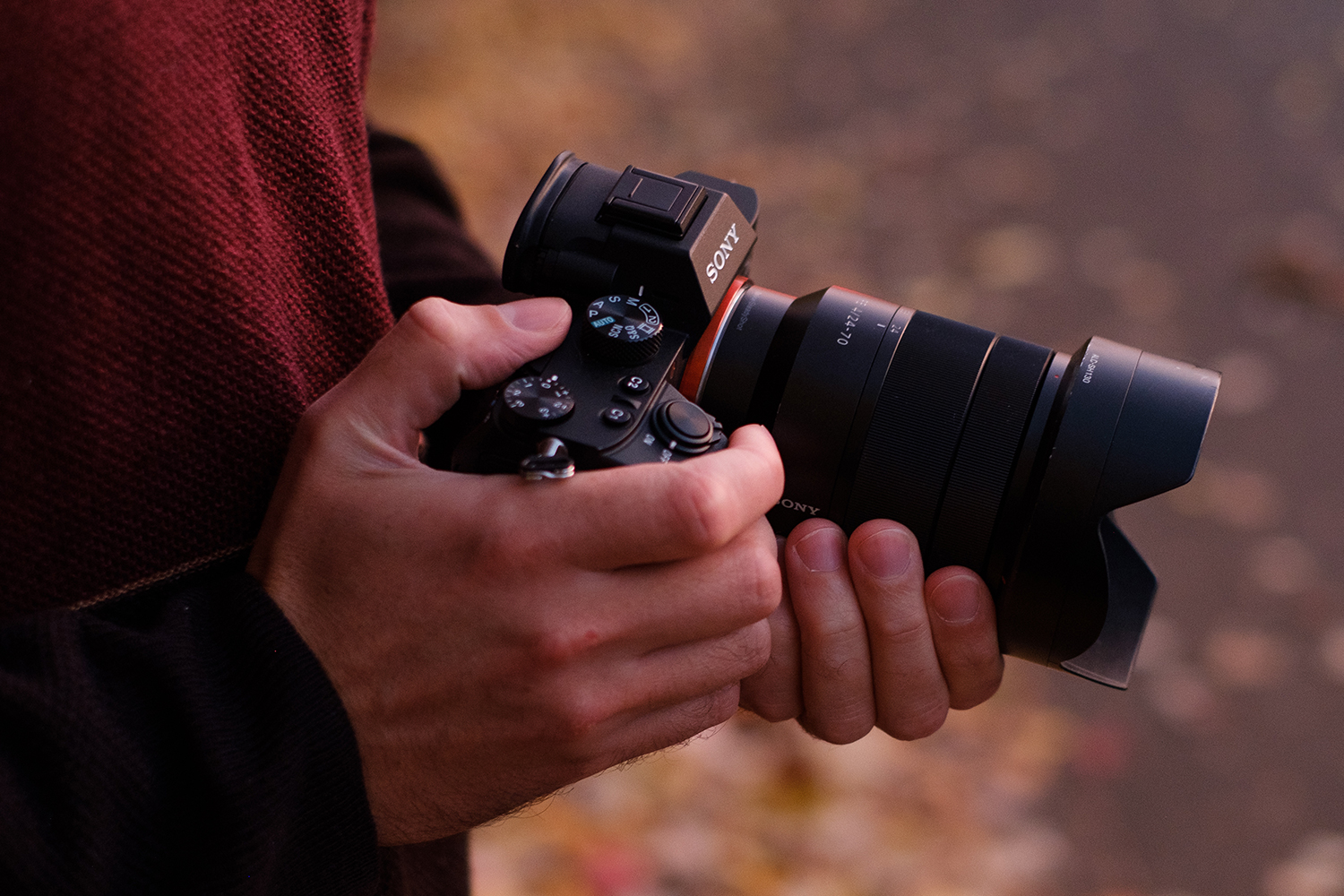
Why should you buy this: Full-frame sensor with in-body image stabilization
Who’s it for: Anyone who needs to look good on both YouTube and Instagram.
Why we picked the Sony A7 III:
Sony’s mirrorless cameras have always been powerful hybrid machines, and the newest A7 III combines stunning image quality with great 4K video from its stabilized, 24-megapixel full-frame sensor. It doesn’t offer all the advanced video functionality of the Panasonic GH5, but it does include a microphone jack, dual SD card slots, and Sony’s flat S-Log color profile for holding onto more dynamic range if you don’t mind spending some time color correcting in post. It also doesn’t have a fully articulating screen, but Sony’s excellent Real Time Eye Autofocus makes it easy to film yourself even if you can’t see what you’re shooting.
While the GH5 may best it for video in some areas, the Sony comes out ahead in still photography — and by quite a large margin. It produces some of the best image quality of any camera on the market. This is why it’s a great option for one-person teams who need to produce both video and still content that stands out from the crowd. That full-frame sensor also gives the A7 III an edge in low light. From your living room to a trade show floor, that can be a huge advantage in any dimly lit location.
The Sony A7 III is the most expensive option on this list and it’s not for everyone, but if you’re looking to take the next step in your stills and video production, it’s certainly worth your consideration.
Read our Sony A7 III review.
The best budget vlogging camera: Panasonic Lumix G7
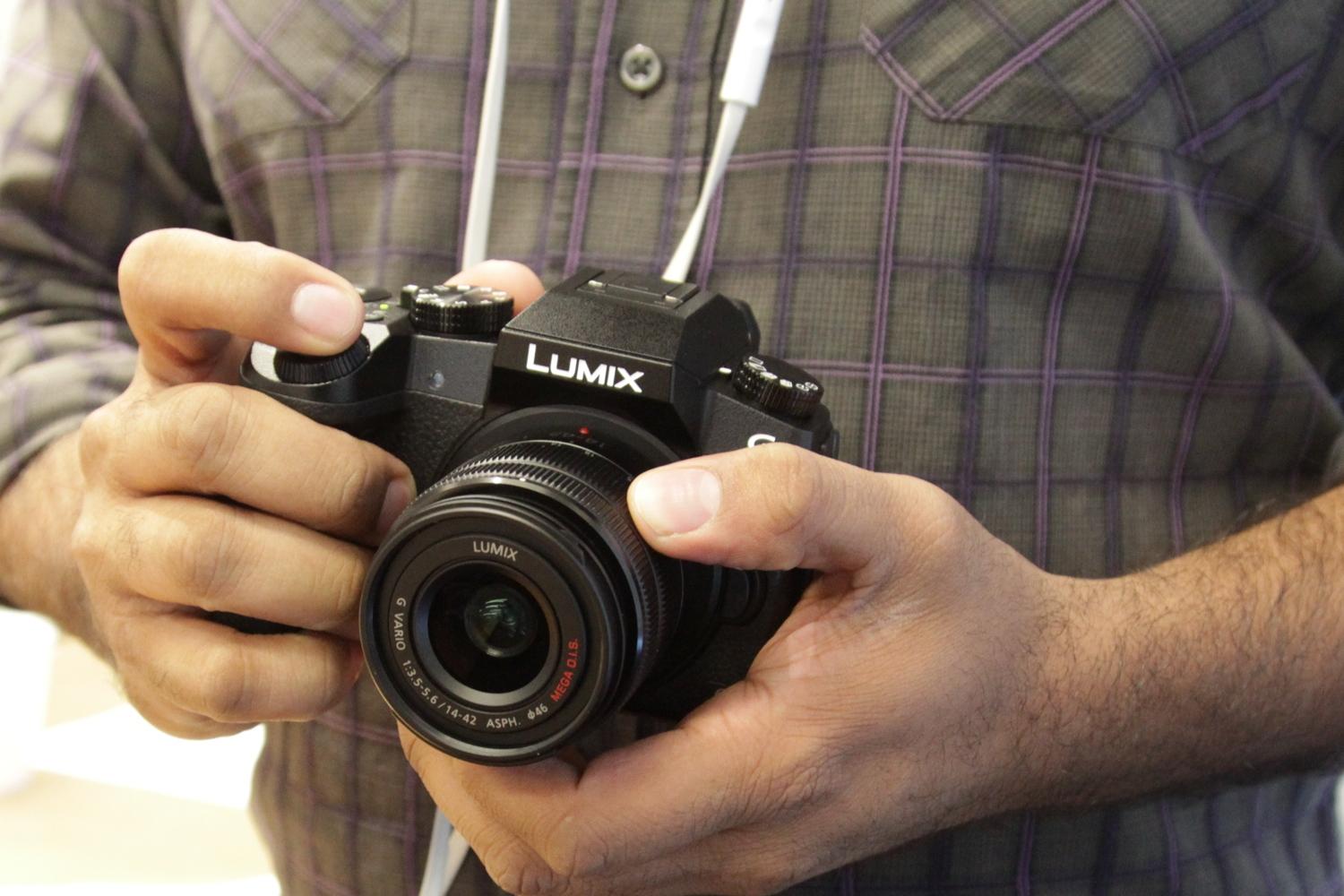
Why should you buy this: Great image quality, solid feature set.
Who’s it for: Suitable for anyone.
Why we picked the Panasonic Lumix G7:
Released “way back” in 2015, the Lumix G7 may not be the newest model, but it still packs a punch when it comes to video and its age means it is now quite a bit cheaper than it once was. Like the higher-end GH5, the G7 shoots 4K video from a Micro Four Thirds sensor and is compatible with the full range of Micro Four Thirds lenses. It also features a 180-degree tilt screen and a microphone jack. There’s no headphone jack, but the mic input is definitely the more important of the two.
One potential red flag for vloggers is that the G7 makes due without the impressive in-body image stabilization found in the GH5, meaning you’ll need to rely on lens stabilization for your handheld shots. Fortunately, the bundled kit lens is stabilized, although as always, you’ll get the best results with a tripod, monopod, or gimbal.
We should also draw attention to the Lumix G85, an upgrade over the G7 that is based on a similar sensor but includes in-body stabilization. The G85 does cost more, but it may be worth it if you do a lot of run-n-gun video shooting.
Read our Panasonic Lumix G7 hands-on review
[The best DSLR for vlogging: Canon EOS 90D
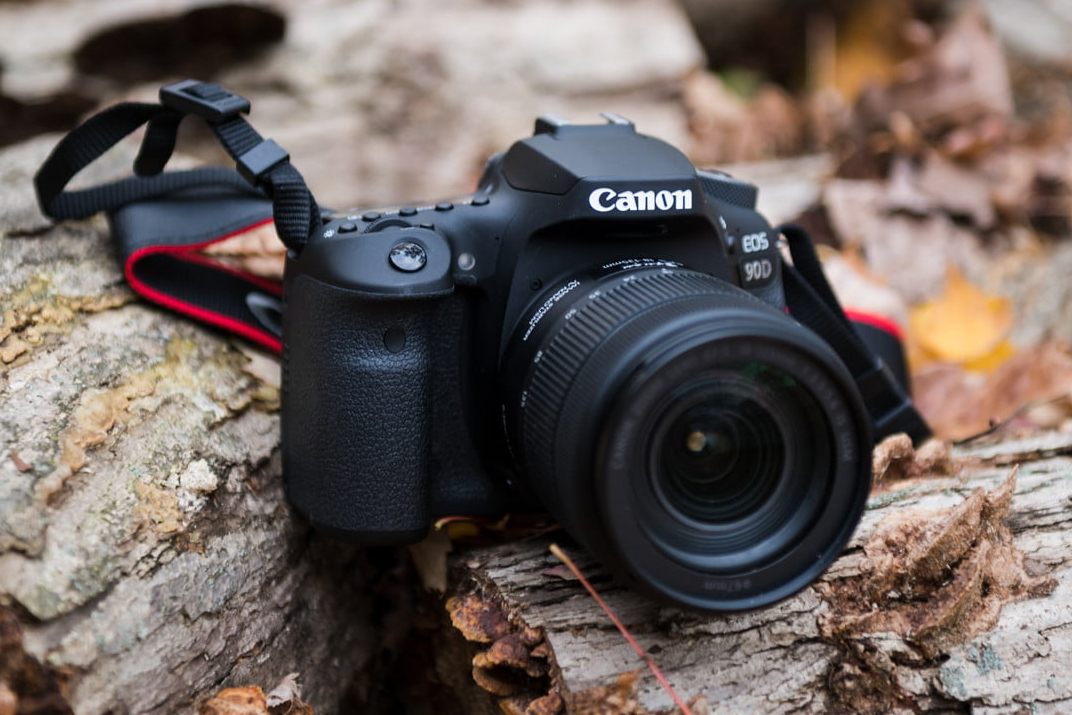
Why should you buy this: Crop-free 4K, articulating monitor, great autofocus.
Who’s it for: Anyone who wants a straightforward camera and doesn’t need 4K
Why we picked the Canon EOS 90D:
A DSLR shouldn’t be your first choice when it comes to vlogging — the optical viewfinder, preferred by some still photographers, is completely useless for video, when the camera is in live view mode and you have to frame your shot on the rear LCD screen. That means you’re carrying around bulk you don’t need and paying for a feature you can’t use. However, a DSLR does offer some benefits for still photography — like excellent battery life — that make a camera like the 90D appeal to hybrid shooters who need both a great still camera and a capable video camera.
The 90D is Canon’s first DSLR to shoot 4K video from the full width of the sensor. Older 4K models would crop the sensor, changing the look of your lenses and making it difficult to get a wide-angle perspective. The 90D also allows you to use Canon’s Dual Pixel Autofocus (DPAF) in 4K mode, something that some of its other cameras do not. DPAF is what allows the 90D to behave like a mirrorless camera when in live view mode, offering very smooth and fast focus acquisition. It’s impressive tech, and works well to keep you or your subject in focus when you’re a one-person crew. The fully articulating touchscreen and microphone and headphone jacks are also plusses.
On the still photography front, the Canon EOS 90D uses a 33-megapixel APS-C sensor, the highest-resolution sensor of its format. While all of those pixels don’t add anything to the video mode (4K uses about 8 megapixels), they do grant extra room to crop or more detail for making large prints. Overall, the 90D is a generalist. It’s well-suited to multiple roles, if not the best at any one of them.
Read our Canon EOS 90D review.
The best action camera for vlogging: GoPro Hero8 Black
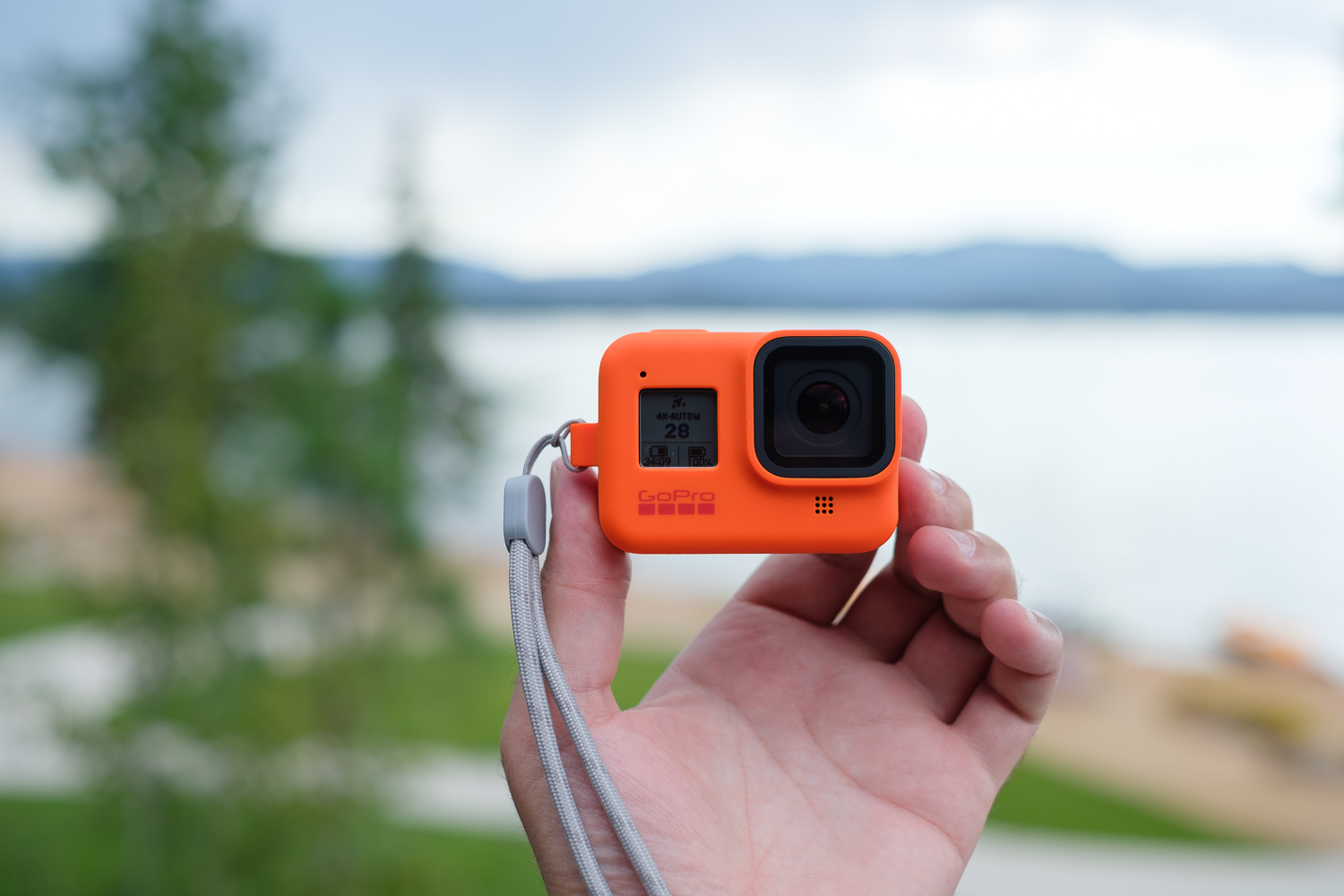
Why should you buy this: Incredible stabilization, versatile mod system.
Who’s it for: Anyone with a love for POV videos or who needs a camera small enough to fit anywhere.
Why we picked the GoPro Hero8 Black:
“Action” camera is becoming a misleading title. These tiny cameras can be used in a much wider variety of settings than the name implies, from (yes) nabbing extreme sports shots to recording Netflix-level movies. And GoPro’s latest flagship, the Hero8 Black, is the best of the bunch.
When it comes to vlogging, the Hero8 Black has several features that make it stand out. It uses a new version of GoPro’s incredible electronic image stabilization, called HyperSmooth, which is simply the best of any camera out there. Whether you’re just walking and talking or bombing down a narrow single-track trail on your mountain bike, the Hero8 Black keeps your footage impressively smooth. Beyond that, GoPro introduced a new series of accessories for the Hero8 called Mods. These allow you to connect a mini shotgun microphone, flip-up selfie screen, and a video light to the Hero8, turning into a powerful production tool.
Built around the same GP1 custom processor introduced in the Hero6, the Hero8 Black records 4K video at up to 60 frames per second or 1080p up to 240 fps for slow-motion playback. The user interface, which was already one of our favorites, has been updated to be even easier to navigate. It should come as no surprise that we picked it as the best action camera for 2020.
Read our GoPro Hero8 Black review.
What about the camcorders?
If you’re over the age of 25, you may recall a time when people shot videos on dedicated devices called camcorders. Perhaps your parents owned one and used it to record embarrassing memories of you on your birthday, Halloween, or prom night. All joking aside, such devices still exist — you can check out our camcorder buying guide and our list of the best video cameras for more information — and while they may be better than ever, camcorders have simply fallen out of vogue as traditional still cameras (and phones) have gotten better at video.
In camcorders there are three things you should look for: Sensor size, zoom range, and a mic jack.
Cameras like the GH5 are true hybrid machines, excelling in both video and still photography, leaving little reason for a dedicated video camera. Large-sensor cinema — or “digital film” — cameras have also gotten cheaper, replacing professional camcorders at the high end of the market.
But camcorders do still have some advantages, like powered lenses for smooth zooms and generally better built-in zoom range. However, interest in camcorders just isn’t where it used to be, and Digital Trends has not reviewed one in years, unless you count action cameras and 360 cams.
For that reason, we decided to stick with mirrorless and compact point-and-shoot style cameras for this list. If you are interested in checking out camcorders, however, we recommend looking for three key things: Sensor size (larger is better), zoom range (generally more is better, but your needs may not require as much), and, of course, a microphone jack.
Can I shoot vlogs with my phone?
The answer to that is yes. Many people prefer vlogging with their phones, especially beginner vloggers. Everybody has their phone with them constantly these days, and it’s easy to set up and use, which makes it more accessible for unplanned vlogging that, sometimes, just happens in the moment.
The most high-quality phones are skilled at handling video, with many capable of shooting 4K — some even at 60p. Make sure your phone’s camera can shoot in landscape for a better experience.
You should also note a few additional things when making the choice to vlog with your phone. If your phone has a front-facing (selfie) camera, the video may not be as clear as phones with cameras at the back.
Additionally, you’ll continuously obtain more high-grade audio quality if you’re using an external mic instead of your phone’s microphone, even if it has the ability to record stereo. To dodge a bunch of irritating feedback or poor overall sound quality, we suggest checking out a less expensive mic like the Movo PM10 lavalier mic.
A significant issue that you’ll most likely encounter at some point is preventing your camera from moving while you’re moving around and capturing takes with your phone. One of the best and simplest ways you can solve this problem is by using a selfie stick. It’s a cheap method that will ultimately better the quality of your video.
If you prefer, you can also spend your money on something similar to the DJI Osmo Mobile 2 stabilizer, a handheld gimbal that conforms to your specific actions and holds your phone steady as you’re filming. It’ll provide you with a stable video without shakiness or any other quality-lowering movements. The Osmo app will offer different features that will make creating videos simple, easy, and relatively inexpensive.



